
The Mill developed an elegant simulation, precise witness camera system and subtle animation to bring evil Queen Ravenna’s Mirror Man to life in 'Snow White and the Huntsman'.
| The MillLondon started work on the Mirror Man effect and sequence about a year ahead of the film’s release. After production VFX supervisor Cedric Nicolas-Troyan’s initial approach, they spent a long period on tests and discussions before photography started. The look of the model for the final Mirror Man character himself had been sculpted by artist Kevin Francis Gray. The Mill’s team, led by VFX supervisor Nicolas Hernandez, had to match this sculpt while designing and creating the distinctive effect that flows out and down to the floor from the mirror hanging on the Queen’s wall, and comes to life. |
|
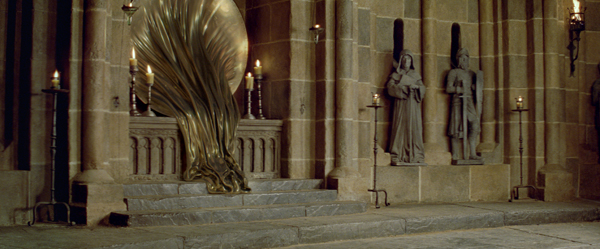 |
|
|
Setting the Stage Shortly after this work, he returned to the set with production VFX supervisor Phil Brennan and Cedric to ensure the concepts would actually work in practice. At this stage, Nicolas worked on his own with the supervisors and on set for about three months. Early reference for the look the director wanted for the effect came from a reel the production had made to gain approval for production, when paint had been poured out and shot flowing toward the camera in slow motion. This footage communicated just how liquid they wanted the effect to be. Before starting any computer tests, Cedric requested a studio shoot with various liquids and materials in slow motion. |
|
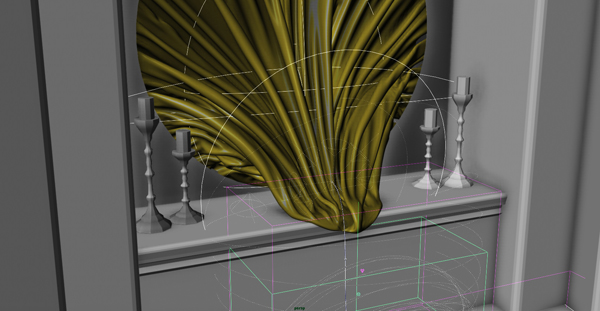 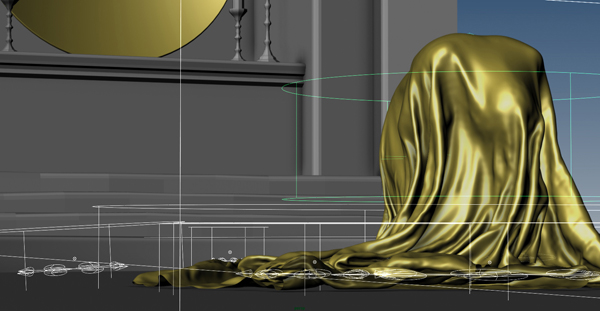 |
|
|
At this point a team at The Mill of two or three artists experimented for another three months with the properties of different cloth types and liquids. Once digital work began, the look evolved into a slow-motion cloth simulation combined with liquids. After plates began to arrive, the team expanded to five or six - Nicolas as VFX supervisor and TD, two effects artists and three compositors. The heart of the sequence involved about 20 shots, plus another 20 shots of mirror enhancements and cleanup. They were also called on early on to produce ten shots for the trailer. Liquid Gold |
|
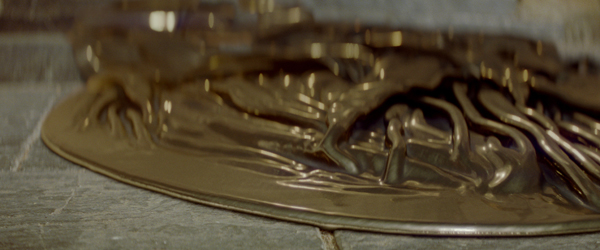 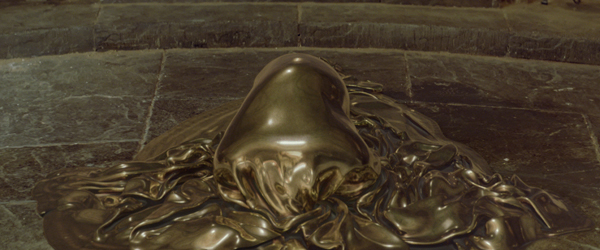 |
|
|
The render was carefully managed. From the first shot the supervisors anticipated that the sequence would need to be refined shot by shot. Although the shots were all in the same fire-lit environment and the Mirror Man was not overly dynamic and moved smoothly, the production wanted something quite specific in every shot. Nicolas had expected to be able to use one generic render set-up but the work wasn’t so straightforward. "We developed a custom shader that we called our ‘übershader’ and used to render a series of specific, different passes in order to control the look during compositing. For example, in some shots they wanted the Queen’s reflected face to appear very clear and sharp while other parts of the images were to appear blurred. So the surface look was separated into a multitude of levels – dirt, oxidation, glossiness and so on – and finally brought back together in Nuke for the composite," Nicolas said. Balanced Simulation |
|
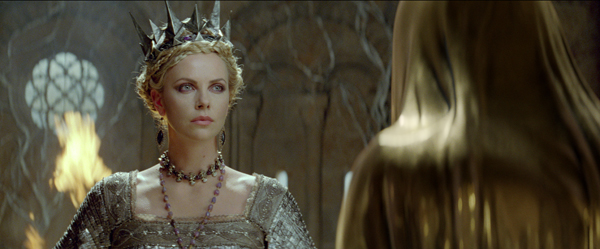 |
|
|
The timing of the flow was an ongoing challenge as well because they were relying on their simulation to achieve the correct timing within the footage. Balancing the desires shapes with the timing always imposed a compromise in one direction or the other. Before the simulation begins in the film, the Queen approaches a practical mirror on set, which they enhanced with re-projected reflections of the Queen. During the shoot, the actor performing the Mirror Man’s voice worked with the actress on set, but off camera. She actually spoke directly to a physical prop that not only helped her maintain an eyeline but also contained a RED witness camera that captured her performance from the Mirror Man’s point of view and helped the team accurately build her reflection in post. “Dealing with the reflections in the moving, irregular mirror surface was a major portion of the work. When capturing lighting data we didn’t use liquids on set as reference, only conventional chrome balls. The set reflections were built in three dimensions, recreating every source of light as a moving sequence of images. All of the flames had to be included as well, of course, so we initially created the environment without firelights and reflected those later,” Nicolas said. |
|
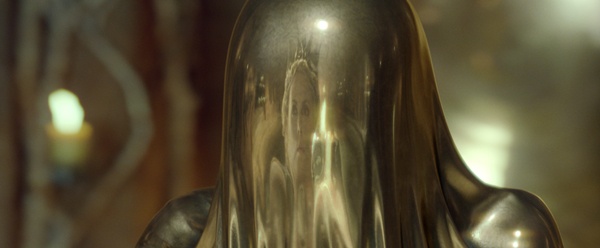 |
|
|
Reflections of Dreams This departure from physical realism is part of the Mirror Man’s identity – the viewer feels that he is mysterious, alive and creepy but ultimately a creature of the Queen’s own invention, a form of hallucination fuelled by jealousy. After the initial simulation plays out the flow of gleaming gold mirror stands up to face the Queen and tell her the truth. It was important that he didn’t morph into a recognizable creature, prompting more tests and relying on verbal descriptions because Cedric had never seen quite what they needed in any film before. The final character had to be subtly hand-animated, requiring a rig and carefully applied weight balance.www.themill.com |
|


















